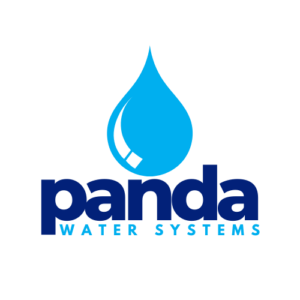Water is one of the most essential elements for life, but access to clean, safe water is not guaranteed in many parts of the world. Whether for personal consumption, industrial use, or agricultural purposes, ensuring water quality through effective treatment is crucial. Water treatment systems are designed to make water safe and suitable for its intended use by removing contaminants, impurities, and pathogens. In this blog, we’ll explore the different types of water treatment systems and how they work to ensure clean water.
1. Filtration Systems
Filtration is one of the simplest and most widely used water treatment processes. It involves passing water through a filter medium that physically removes particles, debris, and sediment. Filters can vary in complexity, but they generally fall into one of two categories: mechanical and chemical.
- Mechanical Filtration: This method uses a porous material like sand, gravel, or activated carbon to filter out physical contaminants. It works by trapping particles as water passes through the filter.
- Chemical Filtration: In addition to removing physical debris, chemical filtration uses substances like activated carbon or ion-exchange resins to absorb dissolved chemicals, chlorine, heavy metals, and other contaminants.
Common Types of Filters:
- Activated Carbon Filters: Great for removing chlorine, volatile organic compounds (VOCs), and unpleasant odors.
- Reverse Osmosis (RO) Filters: A type of filtration that forces water through a semipermeable membrane, removing contaminants down to a molecular level.
- Sediment Filters: Typically used to remove larger particles like sand, silt, or rust.
2. Distillation Systems
Distillation is a process that uses heat to separate water from contaminants based on their boiling points. Water is heated until it turns into steam, which is then condensed back into liquid form, leaving impurities behind. This process is effective for removing dissolved salts, minerals, metals, and other contaminants that are left behind during the evaporation process.
While distillation can purify water to a high degree, it may not remove all volatile organic compounds (VOCs) or certain chemicals that have similar boiling points to water. Nevertheless, it remains an effective treatment for desalination and chemical-free purification.
3. UV (Ultraviolet) Purification Systems
UV water treatment systems use ultraviolet light to disinfect water. The UV light alters the DNA of harmful microorganisms, rendering them incapable of reproducing or causing disease. This method is highly effective against bacteria, viruses, and other pathogens.
UV treatment doesn’t add any chemicals to the water, making it an environmentally friendly and chemical-free option. However, it doesn’t remove physical particles, heavy metals, or chemical contaminants, so it is often used in combination with other methods such as filtration.
4. Chemical Disinfection
Chemical disinfection is a process where chemicals are added to water to kill or deactivate harmful pathogens. The most common chemical disinfectants are chlorine and chloramine. These disinfectants are widely used in municipal water treatment facilities and can eliminate a broad range of microorganisms, including bacteria, viruses, and protozoa.
- Chlorine: Often used in municipal water supplies, chlorine is effective at killing bacteria but may leave a distinct taste or odor.
- Chloramine: A compound formed by adding ammonia to chlorine, chloramine is used in some areas as a longer-lasting disinfectant. It is effective against bacteria but is less effective at killing certain viruses.
While chemical disinfection is a proven method of water treatment, it does not remove chemical pollutants or heavy metals, which may require additional treatment processes.
5. Ozonation Systems
Ozonation uses ozone gas (O₃) to disinfect water. Ozone is a powerful oxidizer that can kill bacteria, viruses, and other pathogens. It also helps to break down organic contaminants, such as pesticides and industrial chemicals. The main advantage of ozonation is that it does not leave any residual chemicals in the water, unlike chlorine-based treatments.
However, ozonation systems can be costly to maintain and require specialized equipment. Furthermore, ozone is a short-lived substance, so the treated water must be consumed relatively quickly to prevent the ozone from dissipating.
6. Ion Exchange Systems
Ion exchange is a water treatment process that involves exchanging unwanted ions (e.g., calcium, magnesium, or sodium) in the water with more desirable ions, such as hydrogen or sodium ions. This process is particularly effective in softening hard water and removing metals like lead, copper, or iron.
The most common application of ion exchange is in water softeners, which are used to treat hard water by replacing calcium and magnesium ions with sodium or potassium ions. This treatment helps to prevent scale buildup in pipes and appliances, improving efficiency and longevity.
Conclusion
In conclusion, understanding the various types of water treatment systems is crucial for ensuring access to clean and safe water. Each treatment method, whether it’s filtration, distillation, chlorination, or advanced techniques like reverse osmosis and desalination, plays a vital role in addressing specific water quality issues. The choice of system depends on factors such as water source, local infrastructure, environmental concerns, and economic feasibility. As water scarcity becomes an increasing global challenge, innovations in water treatment, such as desalination, offer promising solutions to provide freshwater from otherwise undrinkable sources. Ultimately, investing in the right water treatment system not only protects public health but also contributes to sustainable water management for the future. If you have any questions or need expert guidance in selecting the right water treatment system for your needs, feel free to reach out to us. Our team is here to assist you with tailored solutions to ensure clean and safe water for all.
Contact Us:
Phone: 716-219-4233
Email: info@pandawatersystems.com
Website: www.pandawatersystems.com

